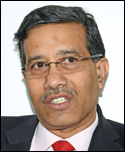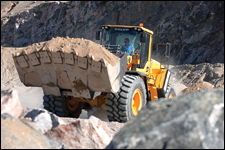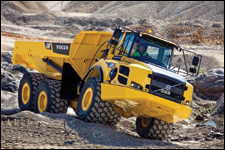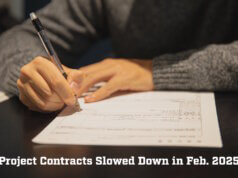 A.M. Muralidharan, President, Volvo Construction Equipment, analyses the various challenges facing the Indian construction equipment sector on one hand and looks at the key industry segments that are expected to drive growth in coming years.
A.M. Muralidharan, President, Volvo Construction Equipment, analyses the various challenges facing the Indian construction equipment sector on one hand and looks at the key industry segments that are expected to drive growth in coming years.
The Indian earthmoving and construction equipment (ECE) market has significant growth potential. As per a CII-IECIAL report, from total revenues of $3.3 billion in 2010, it has potential to grow to $22.7 billion by 2020, and grow from over 60,000 units in 2010 to 330,000 in 2020.
The infrastructure segment in India is also set to take off with the government plan to invest around $1 trillion in infrastructure development during the 12th Five-Year Plan. It has eased norms for transfer of land for PPP projects, allowing acceleration of infrastructure projects in sectors like railways, civil aviation and ports that are required to boost economic growth.
 Challenges
Challenges
There have been some challenges facing the construction industry, which the government is keen on addressing. For example, there has been a delay in commencing infrastructure projects due to time and cost overruns; added to this is shortage of funds, environmental concerns and delay in government clearances. Project delays have been caused due to land acquisition challenges, in turn causing major investment deferrals by companies. There is also a lack of structured regulatory and policy framework for PPP models which needs to be addressed.
Lack of environmental norms is another key area of concern that prevents project completion and hinders investment in road building equipment. Moreover, there is a lack of structured regulatory and policy framework when it comes to the PPP framework. Although this model could prove to be a great opportunity for investment, the framework is inconsistent and lacks transparency. The processes related to procurement, awarding of contracts and dispute resolution need to be streamlined.
Growth
The Indian construction equipment industry has witnessed a consistent double-digit growth over the past few years. Though the economic slowdown a few years ago had its moderate effects on the industry, it regained momentum in 2010, showing a stupendous growth which is expected to continue for the next few years at least. The earthmoving segment, in particular, has driven the overall construction equipment industry in India with strong demand from the government-backed infrastructure projects.
We expect the market to grow at a CAGR of 15-20 per cent for the next four-five years. The growth will mainly come from infrastructure requirements and general construction, with mining expected to make a comeback. Infrastructure development and road construction projects are being decided, so we see scope of increase in market.
The construction equipment industry has always been cyclical, with booms quickly followed by recessions. The depth and severity of the most recent drop in demand has highlighted the need for companies to be more agile and flexible.
The construction equipment industry has evolved over the years and has emerged stronger to deal with environmental issues. With this in view, the industry’s commitment to fuel economy will only continue in the years to come, and a key to achieving that is to adopt new technologies.
The need for more fuel/energy efficient machines has been driven by two key reasons: one, the genuine and increased focus on the environmental impact that burning fuel creates, and two, the cost of operations of maintaining equipment through fuel emissions. It is good to see customers demanding ‘fuel efficiency’ as a key requirement in construction equipment as this means a conscious change and, more importantly, brings about lesser impact on the environment.
 Looking ahead
Looking ahead
The road construction business, which is the key for road construction equipment manufacturers, is looking bright with the government planning to invest Rs.50,000 crore that will encourage more projects on PPP model for massive infrastructure development. The government also plans to invest Rs.10,000 crore and introduce external commercial borrowing. It has planned 8,800 km of road construction, which will provide more avenues for projects.
Going forward, government will need to formulate policies that will be in support of all stakeholders plus adequate backing from private sector will further the growth of the construction equipment industry.











